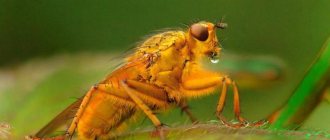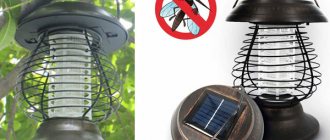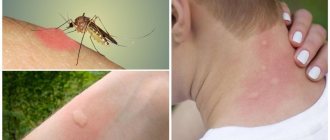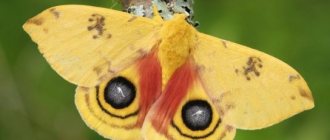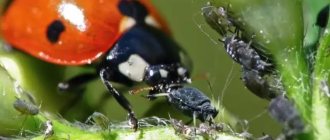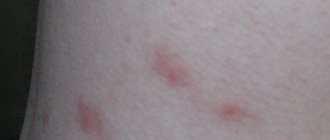How long do insects live? This depends on several factors. When conditions get really bad, some insects go into diapause.
It's a bit of a life on hold until things get better. Fleas take time out if there are no animals nearby to feed on. Typically, insect diapause lasts weeks, months, years.
Which insect lives the longest? The longest-living insects are the Splendor beetles (Buprestidae), some of which remain in the larval stage for more than 30 years.
If there is a fountain of youth for insects, the termite queen drinks from it. She lives to be 50 years old. Apart from these two insects, the cicada lives for 17 years.
Cicada
The female cicada lays her eggs on tree branches. When the nymph hatches from the egg, it falls and buries itself in the ground.
Attaches to the roots of plants and trees. Here it remains motionless for about 17 years, sucking the sap of the roots. After this long “burial”, a mysterious instinct forces the larva to move towards the light. She climbs tree trunks, skin falling apart. A mature cicada emerges.
For about five weeks, the Cicada leads an active life in the sun. After this period he dies. Most species of beetles live only a few days or even hours.
Fire ants
Fire ant queens live from two to six years. The record is seven years. Male fire ants have a much shorter lifespan, ranging from one to six months.
The only function of a male is to mate with an unfertilized reproductive female. After mating he dies.
Bed bugs
An adult bedbug lives from four months to a year under the right conditions. Bed bugs can live for a whole year without feeding and can survive temperatures as low as 50 degrees Celsius. They have adapted to standard insecticides.
Find out more What an insect bite looks like, symptoms and signs
How long do bedbugs live in the cold?
How long bedbugs live in the cold depends on specific temperature values, the duration of exposure to cold on the insect and the current stage of its development.
Adults survive at temperatures of -17° C for up to 2 hours. To kill the entire population of pests at all stages of development, constant exposure to a temperature of -15° C for at least 4 days, or - 20° C for 2 days is necessary.
The lower threshold of comfortable temperature for bedbugs is +14° C; anything below forces the pests to change their lifestyle. The larvae stop developing, the adults begin to gradually reduce their activity, falling into suspended animation as they increasingly approach 0°C.
It is important to take into account that for bedbugs to die, constant exposure to frost is necessary. If the temperature fluctuates and changes, the bug either freezes, then thaws again, and in the end it gets warm again, then this not only does not harm it, but, on the contrary, improves it. Pests that have been exposed to cold, but did not die, quickly develop increased resistance to negative temperatures and can subsequently tolerate them much more steadfastly than before.
Frost can be used to destroy bedbugs, their larvae and eggs on things and objects that cannot be treated with insecticides - bedding and accessories, clothing, toys, textiles. The freezer compartment of the refrigerator is used for this purpose. At the same time, it is important to maintain a constant exposure temperature within the selected values and not to interfere with the process, checking how it is going.
Recommended Links
How to properly use a bedbug freezer and what things can be put there.
Bees
The queen bee lives for two to three years. Some species are up to five years old. On average, worker bees live five to six weeks in the summer. During the winter months, a worker can live for up to six months to help maintain the hive, raising new workers for the spring.
A worker bee stings only once. Dies after biting its victim. These bites are to protect the hive or to defend against a threat.
Cockroaches
Cockroaches live for a couple of years, depending on the species. They can even live up to a week without a head. The lifespan of an adult female German cockroach varies from 20 to 30 weeks.
The average lifespan of adult female American cockroaches is about 440 days.
How many days does a mosquito live after biting a person?
Mosquitoes surround us everywhere - in the forest, on a walk, on a picnic, they fly home, which causes serious concern. Have you ever wondered how many days a mosquito lives? And how shortened is the life of this insect after another bite? Let's try to understand these issues.
What is the lifespan of a mosquito?
There are about 3,000 species of mosquitoes! Today we will talk about the most common and familiar to everyone from childhood.
The lifespan of individual mosquitoes varies: the female lives on average 42-56 days, but the male lives much less, his lifespan is only 10 days. Of course, these figures relate to the life of mosquitoes in natural conditions. The life expectancy of a mosquito in an apartment or other unnatural conditions is much lower.
How long does a mosquito live after biting a person?
In general, it is impossible to give an exact answer to this question, because... There is no relationship between mosquito bites and life expectancy.
A mosquito bites a person in order to get enough, drink blood, reproduce and continue its life cycle. After being bitten, the mosquito continues to live exactly as long as nature allotted to it. Unless, of course, we are talking about the case when a person manages to react and kill the insect immediately after the bite or even during it.
How long do mosquitoes live in an apartment?
It all depends on how quickly the residents react to get rid of the “uninvited guests.”
For example, if special means are used to kill mosquitoes, then they will have no more than a few hours to live. If you catch mosquitoes individually on your own, the fight against insects can drag on for several days. Everything will depend on their number and your desire to say goodbye to them as soon as possible!
How to fight mosquitoes?
There are many ways to protect yourself and your home from mosquitoes. Let's consider the 3 most extensive areas:
- Traditional methods.
- Repellents.
- Insecticides.
- Ultrasonic traps.
Traditional methods involve the use of various plants, herbs and infusions that will repel insects. They are not very effective, but, nevertheless, you should not completely abandon them. Folk remedies can be combined, for example, with repellents.
Repellents are specialized products aimed at protecting against mosquitoes. They repel but do not kill insects. There are repellents for both people and animals. Depending on the age and sensitivity of the skin, you can choose different types of repellents: for children, for people with sensitive skin, for allergy sufferers, etc.
Insecticides, unlike repellents, not only repel, but also destroy mosquitoes. Insecticides have many contraindications. As a rule, they cannot be used indoors. They should only be applied to clothing in an open space. It’s a different matter when it comes to “Raptor” insecticides and analogues.
They are safe for humans, however, they are contraindicated for use if there are animals or aquarium fish in the house. Ultrasonic traps are mechanical devices. After connecting them to the network, they begin to emit ultrasonic waves, thereby repelling mosquitoes.
Let's sum it up
So, we found out that the common mosquito lives on average 42-56 days (female) and 10 days (male). A mosquito that has drunk blood continues its life cycle and does not die, as some believe.
In an apartment or any other unnatural living conditions, mosquitoes live less. There are various ways to combat them: traditional methods, repellents, insecticides and ultrasonic traps.
Source: https://bez-klopa.ru/komaryi/skolko-dney-zhivet-komar-posle-ukusa-cheloveka/
Fleas
Fleas go through their entire life cycle (eggs, larvae, pupae, adults) in just two weeks or more than a year. Flea larvae remain in their case until they sense vibrations from a nearby food source.
This is why fleas can suddenly appear everywhere. They were waiting for the right moment to enter adulthood. Adult fleas live for about two weeks without a host. Pupae – several months.
Stages of development
Most insects are characterized by developmental metamorphosis in several stages. The fly is no exception. In the life of this insect, all the traditional four stages are present, during which this pest goes through its entire life path.
So, let's list these 4 phases of life and development of a fly, they are as follows:
- egg,
- larva,
- doll,
- adult.
Now let's go through each of these four stages in more detail. Let's find out how long it takes an insect to pass through each of them, and how they are characteristic.
Egg
As already mentioned, one female fly can lay up to 120 eggs at a time. Usually, for laying, these insects choose the places most suitable for the survival of their offspring in the first stage of life.
These include:
- all kinds of human waste,
- cattle manure and domestic animal excrement,
- corpses of dead animals,
- cesspools,
- rotten fruits and vegetables,
- rotten meat products.
It must be said that being in the egg state is the shortest development cycle of this insect. It takes just a day for the egg to metamorphose into a tiny larva.
During this one day, fly eggs that do not exceed 2 mm. in length, nourish the embryos located inside with yolk. After which, about 24 hours later, larvae emerge from the eggs.
Larva
Like a fly walking on the ceiling.
The larvae that have just hatched from the eggs resemble thin white threads that can barely be seen with the naked eye. When asked how long it takes for the larva to move to the next stage of development, let’s say that the insect usually stays in this state for about a week, more often not even more than 5 days.
The larva is usually very difficult to detect, since it avoids exposure to direct sunlight and tries to burrow as deeply as possible into the environment in which it was born. In the thickness of the nutritional substance, the larva gains the calories it needs for development.
It becomes fatter, becomes larger, changes its pale color to a brownish tint, after which it pupates, making the transition to a new stage of its existence.
Doll
The most passive stage of an insect's life is the stage of being in the form of a pupa. A fly pupa is formed by hardening the skin of the larva, which becomes the pupal case or puparium. Inside this case, the final metamorphosis occurs, during which the tissues of the larva disintegrate and a restructuring of all its systems occurs.
This is how the adult individual (imago) is formed, so familiar and easily recognized by everyone. How long does this transformation process take? Just 5 days, and another buzzing pest is born in all its “glory.”
flies
Most flies live 15 – 25 days. In fact, flies reach full adult maturity in just 12 days. Once mature, the female lays 150 eggs at a time.
She can lay off six games before she dies. Flies quickly transition from eggs (8 – 20 hours) to the larval stage. Three days to eight weeks to the pupal stage.
Ten days to adulthood. It is interesting to note that temperature affects the rate at which flies mature. The warmer the weather, the faster they will grow and reproduce.
Mosquitoes
Adult female mosquitoes live more than one month. Males die one to two weeks after they become adults. Female mosquitoes—the ones that bite—rely on blood meals to get nutrients. After bloodletting, eggs are laid.
Find out more 10 interesting facts about caterpillars that you never knew about
Sometimes one egg (Aedes mosquitoes), sometimes up to 300 at a time (Culex spp.) - in or near water bodies. The eggs hatch and become larvae or wigglers.
Wigglers enter the puppet stage as quickly as their species and the surrounding weather require. Usually this is several days. The pupa becomes an adult in just two to seven days. Then it hunts for nectar or blood to start the cycle again.
Mosquitoes spend anywhere from four days to one month in water, so it is necessary to rid your property of standing water to control their population.
Ticks
Ticks live three to five months between each stage (egg, larva, nymph, adult). Ticks, which require multiple molts before reaching maturity, can take up to three years to mature.
Once a tick has reached maturity, its sole purpose is to reproduce. The male will die shortly after mating. Some females lay one large batch of eggs before dying.
Others are several smaller batches before the end of their lives comes.
Egg laying lasts from several days to several weeks. Some species complete their life cycle in just 90 days, others in a year. Some take two years to complete their life cycle.
Life cycle of an insect
Like most insects, a mosquito goes through 4 stages during its life: egg, larva, pupa, imago (as scientists call a mature individual). The insect develops in water, and only comes to land when it becomes an adult.
The eggs laid by the female float on the water in the form of small rafts consisting of 20-30 eggs. The time for the larvae to emerge from them depends on the water temperature and ranges from 40 hours to 8 days. Mosquito larvae are easy to spot in water: they are constantly in an upright position. Their food consists of microorganisms. They grow quickly, molt three times and pupate after 4-5 days.
The pupa remains motionless at the surface of the water, with its spiracle tubes exposed. After 5 days, an adult mosquito flies out, ready to reproduce. Males hatch first, followed by females.
Mayfly flies
Mayflies (Ephemeroptera) live from several hours to several days as adults; some types – only 1 day. Because of this, they are called day flies. They are so short-lived that they don't even have functional mouthparts!
Find out more 20 interesting facts about termites
What's the point when you only live one day. Mayflies appear together in large flocks. They don't have to waste time looking for a mate.
Lifespan of different types of flies
A fly is a two-winged insect belonging to the phylum of arthropods, the order of flies and mosquitoes. The insect's body length varies from a few millimeters to 2 cm, depending on the species. The lifespan of flies is 1–2.5 months.
One of the most important distinguishing features of the fly is its huge eyes, which consist of several thousand hexagonal lenses. Thanks to this structure of the eyes, the fly has very good vision and is able to see even what is happening from the side and behind, that is, it practically has a circular field of vision.
Room
The fly belonging to this species practically no longer lives in the wild. Therefore, she is the most annoying and impudent guest in our homes in the summer-autumn period. At this time, our life is complicated by the constant struggle with these small, but very fast and resourceful insects.
House flies are most active during the daytime. The homeland of this insect is the steppe of Central Asia. But at the moment, its distribution is observed everywhere near human homes - both in rural areas and in cities.
A fly of this species is not a biting or blood-sucking insect, but nevertheless it causes significant harm to humans.
Its limbs have tentacles on which various harmful bacteria and dirt accumulate, leading to infectious diseases. The housefly's body is gray with brown tints. It consists of the abdomen, head and chest.
The chest is connected to wings and three pairs of legs. On the head there are very large eyes, occupying almost the entire head, an oral cavity and short antennae. The upper part of the breast has four dark stripes, the belly has black spots in the form of quadrangles.
